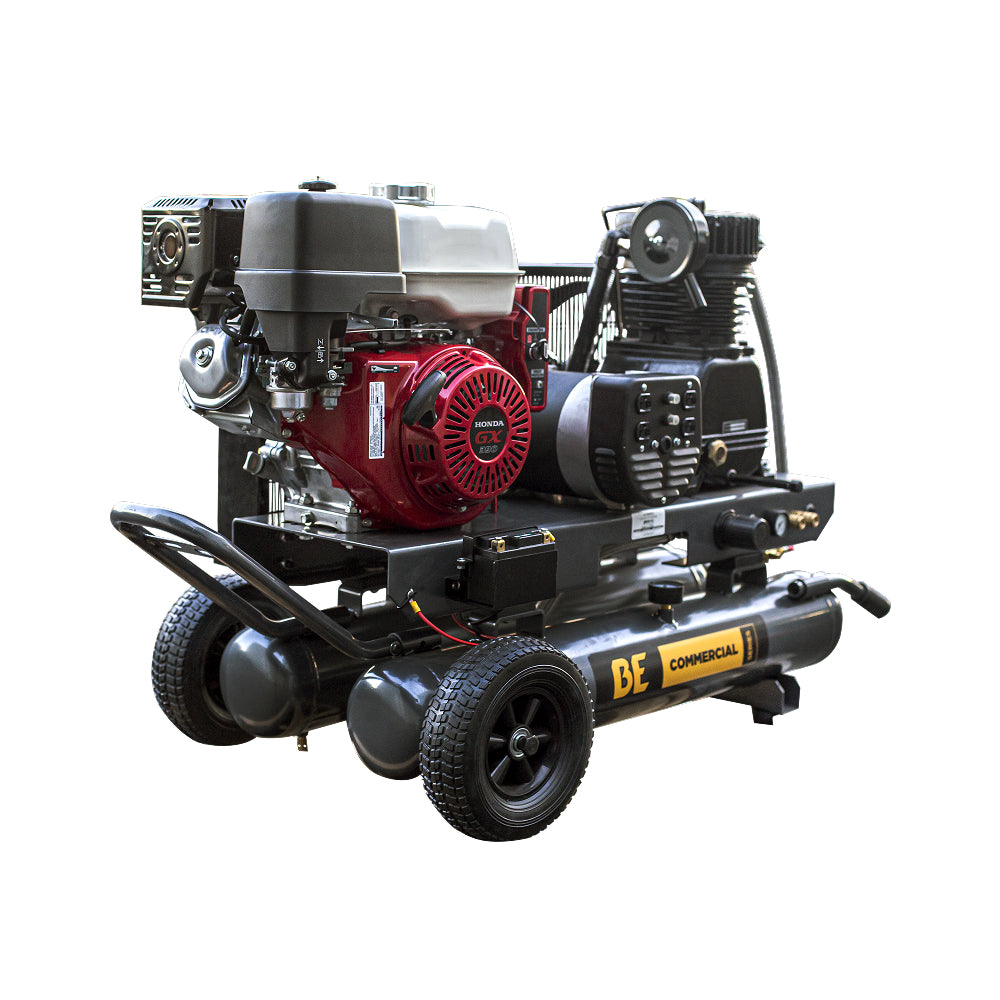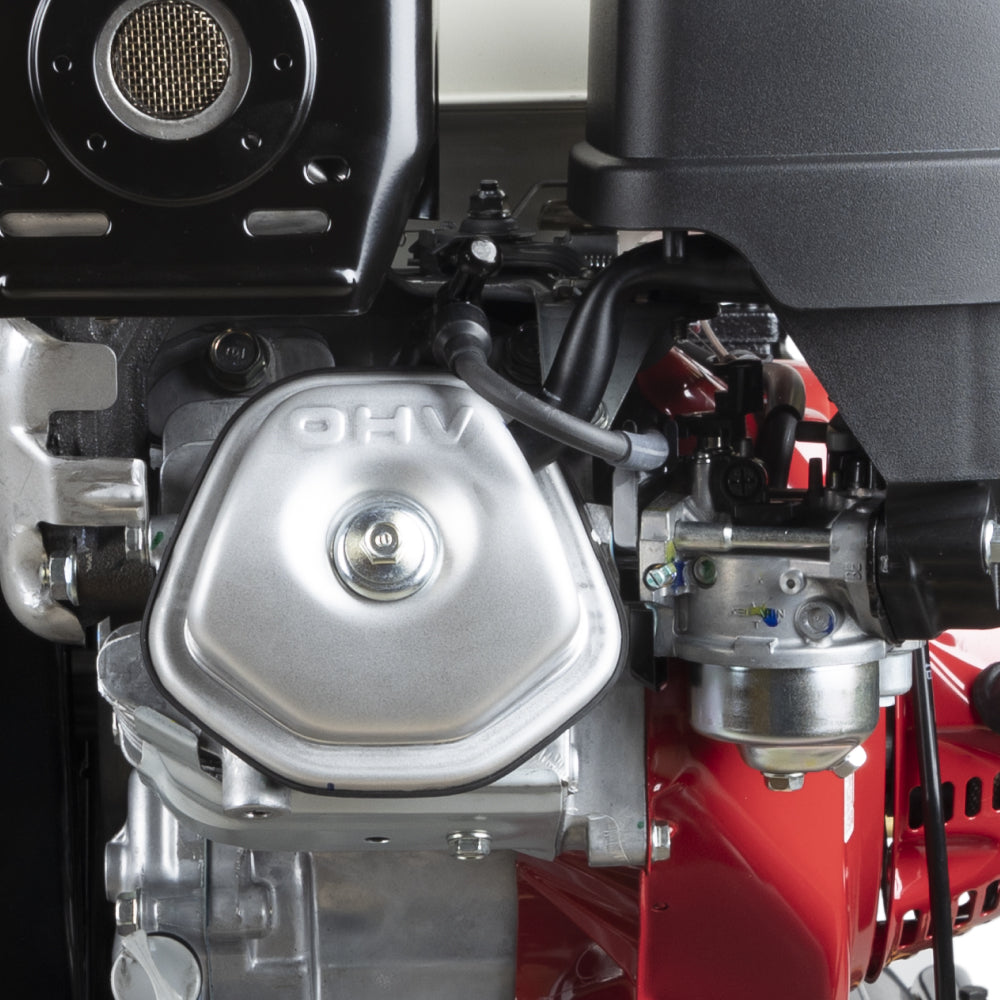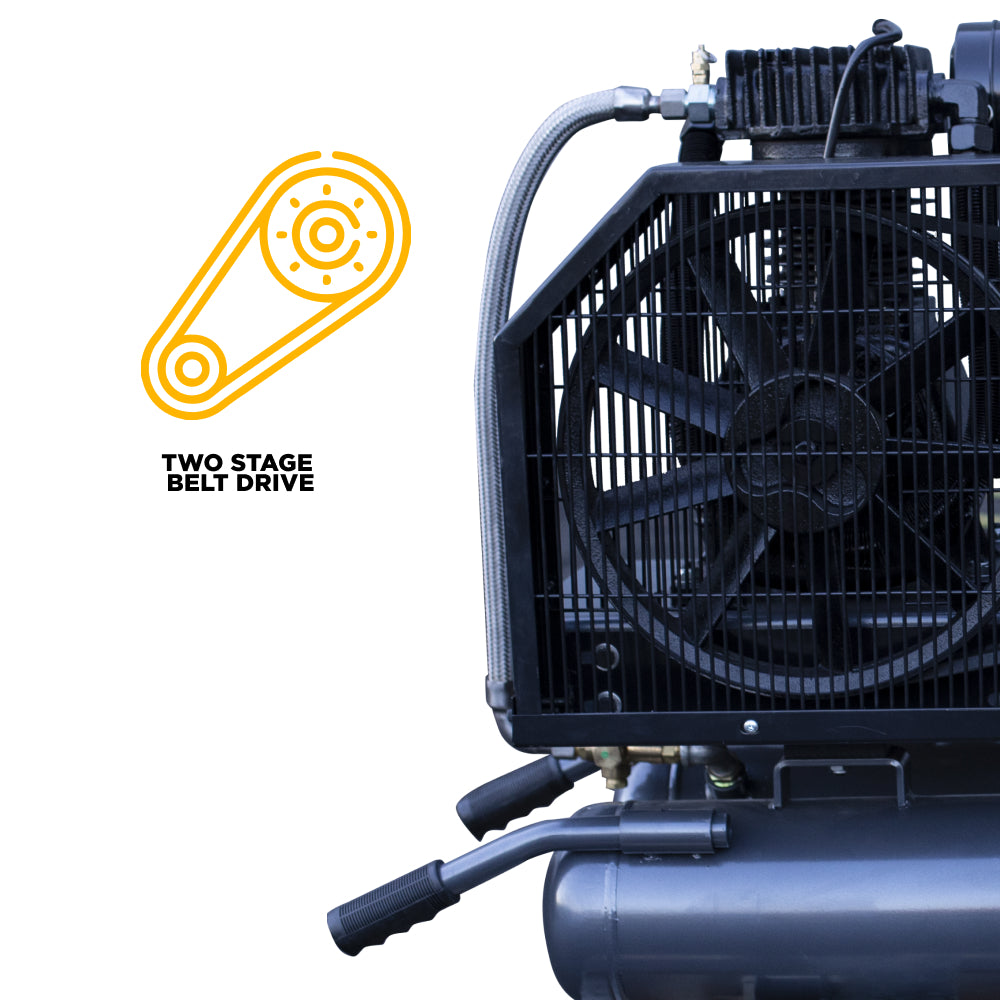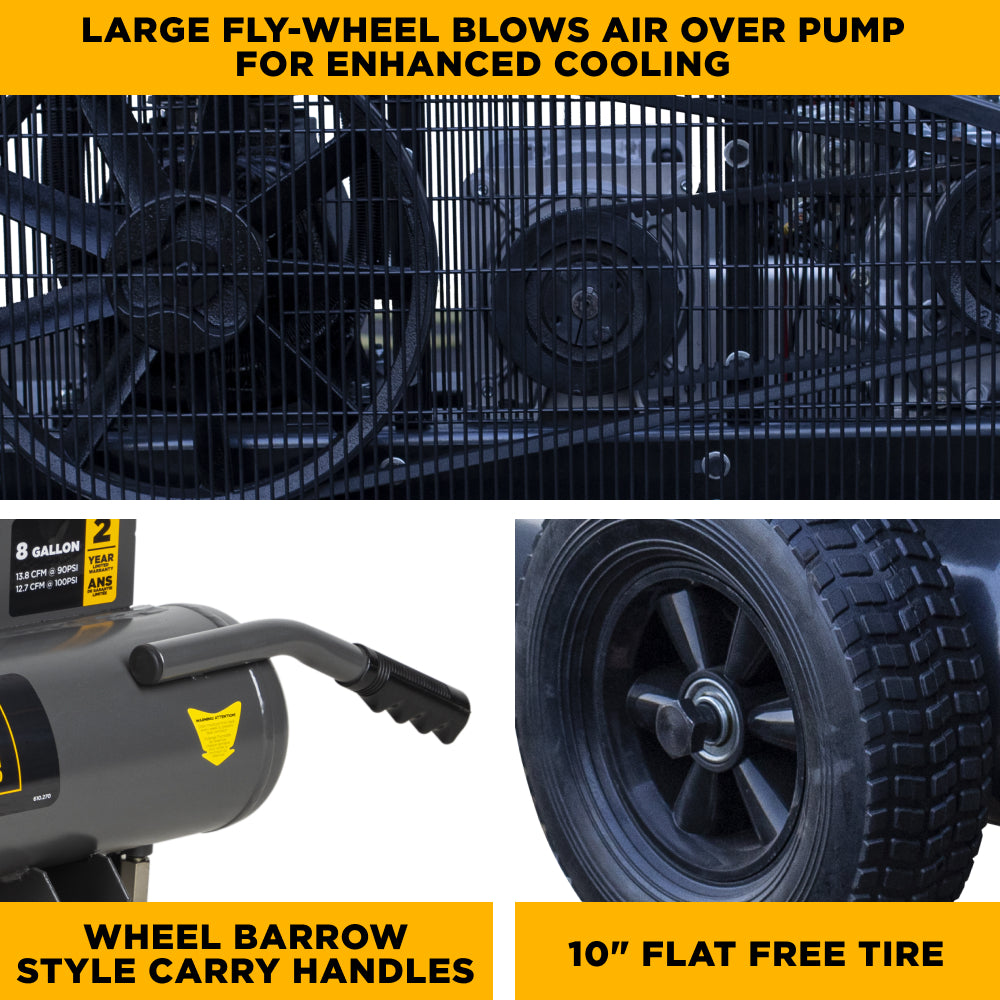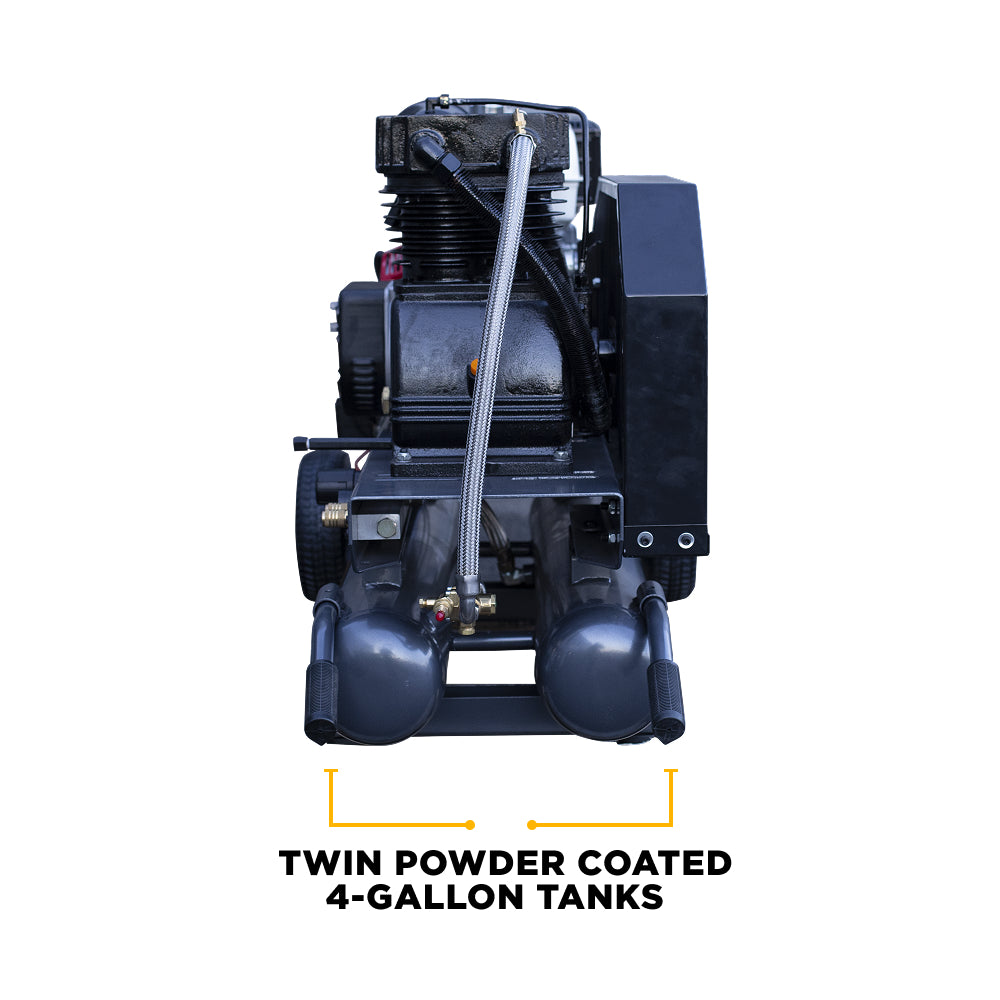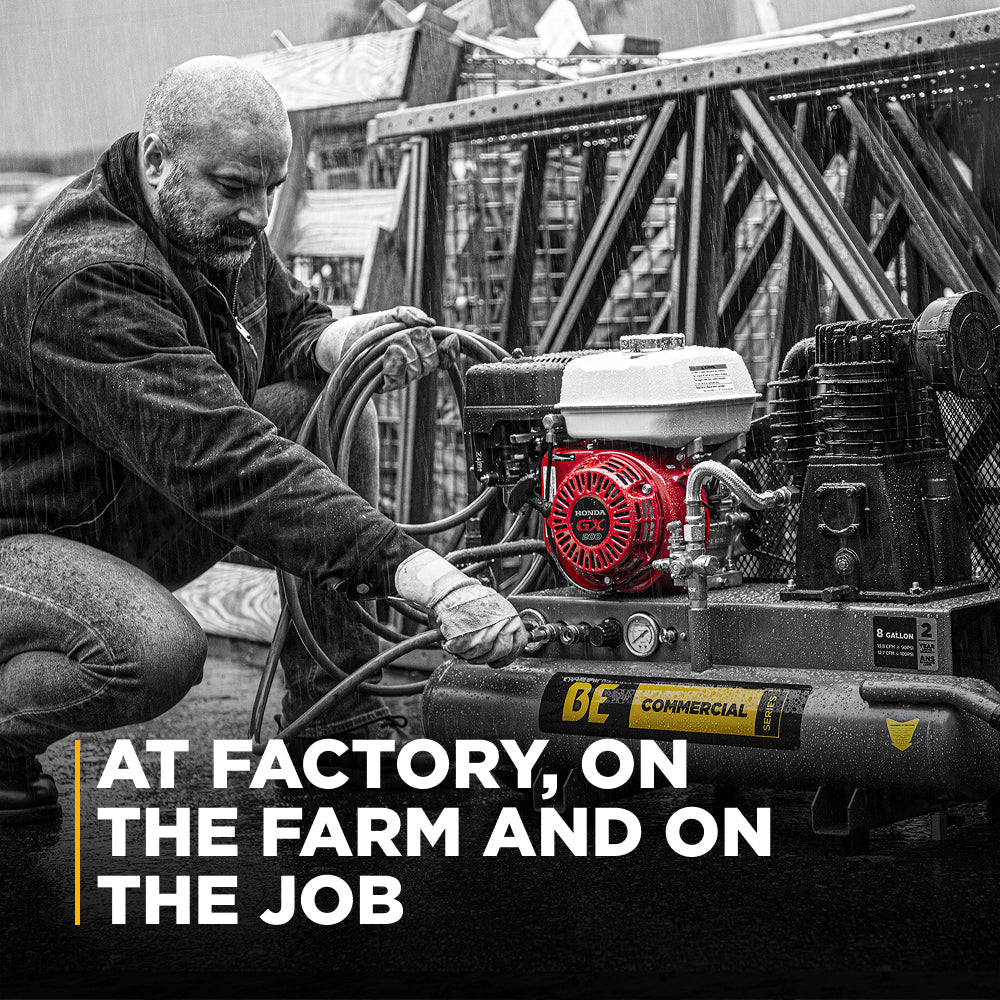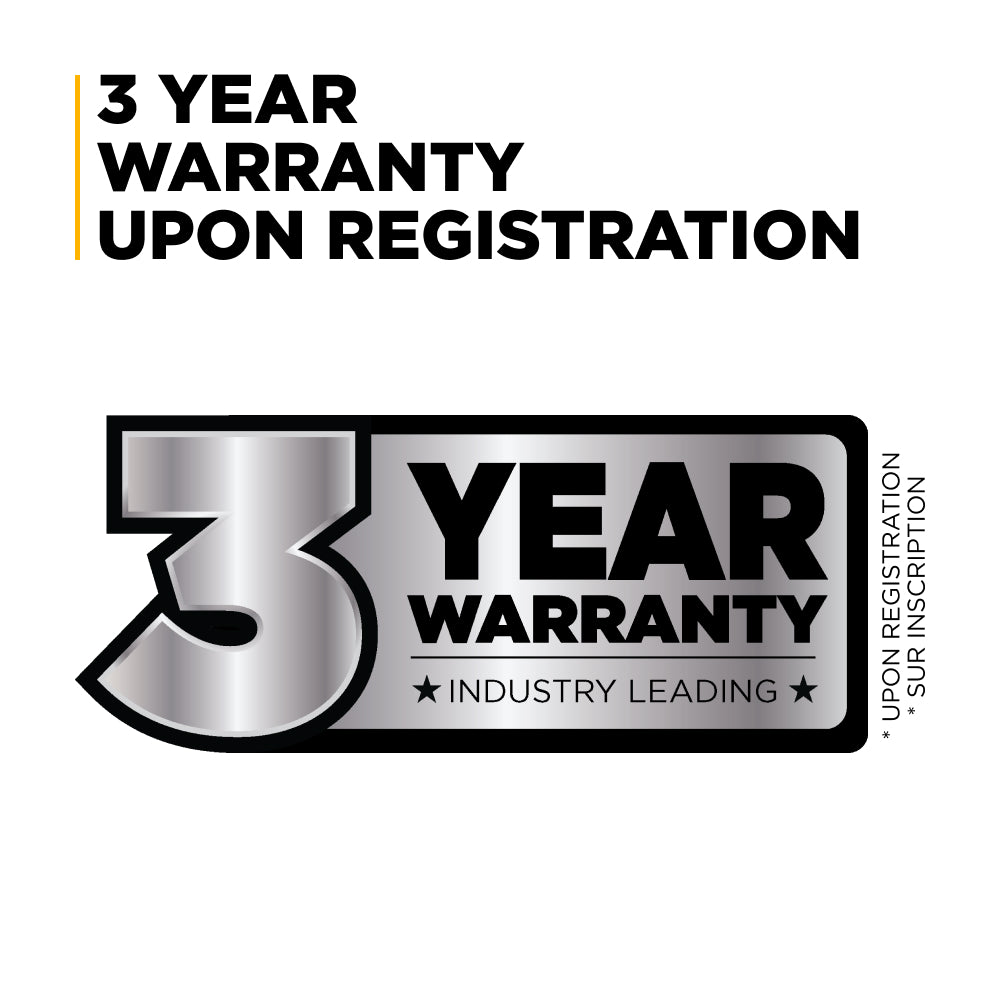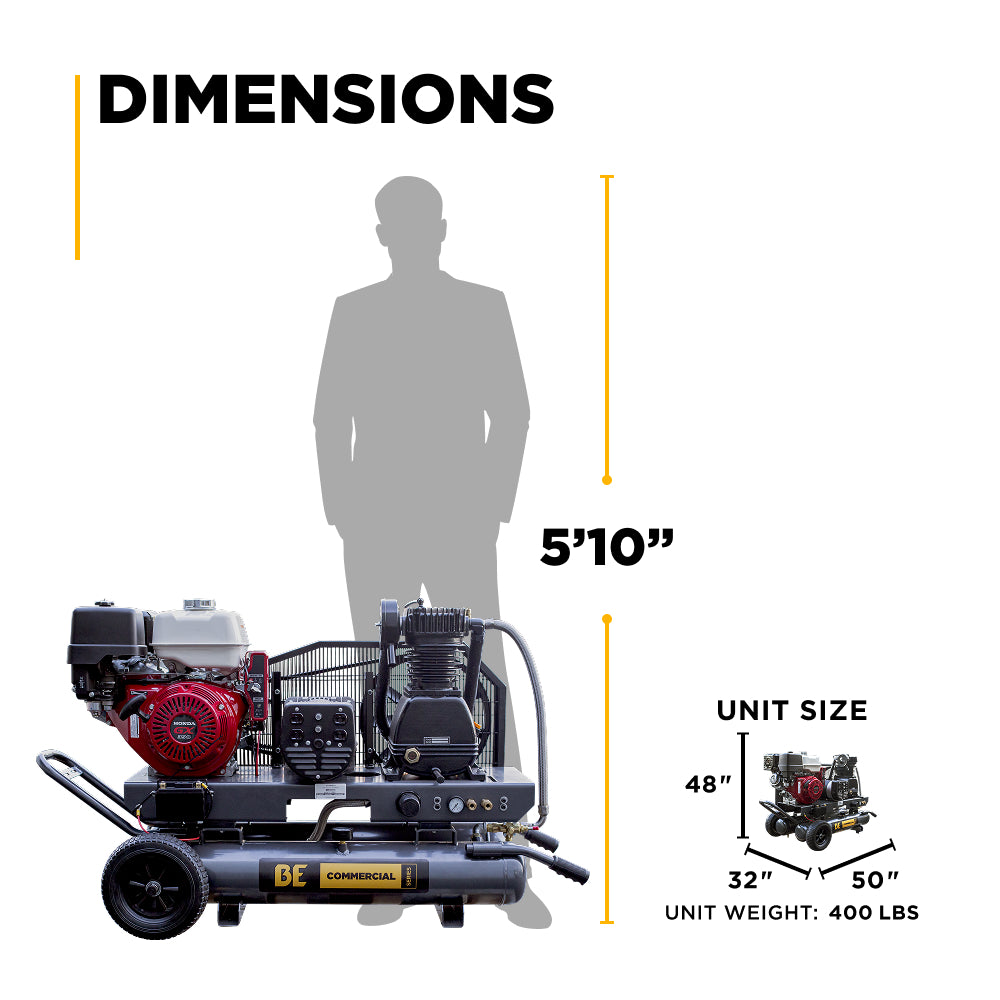Product
Description
The BE Power Equipment AC138HEG2 Gas-Powered Air Compressor/Generator is a heavy-duty, all-in-one solution for professionals who need reliable air power and electric power in one machine. At the heart of the AC138HEG2 is the commercial-grade Honda GX390 engine, known for its outstanding weight-to-power ratio, long-term durability, and fuel efficiency. This unit delivers an impressive 16 CFM at 175 PSI, and the integrated generator can operate simultaneously with the air compressor, making it the perfect tool for remote job sites, service trucks, and mobile operations.
Built for daily, heavy-duty use, the AC138HEG2 is designed to maximize efficiency and performance. The electric start system with included battery ensures easy, reliable ignition every time. Its belt drive system reduces pump RPMs, keeping the compressor running cooler and extending the life of internal components. The two-stage, splash-lubricated pump is engineered with cast iron cylinders, accessible valves, and bearings on both ends of the crankshaft for maximum strength and longevity. Whether on the ground or on the move, this unit is built to perform under pressure.
The USA-made Conrader pilot unloader valve is factory-set to cut in at 140 PSI and cut out at 175 PSI, providing smooth and efficient cycling to protect your system from unnecessary wear. Dual powder-coated 4-gallon tanks offer 8 gallons of total air storage and are finished with ball valve drain ports for easy moisture removal. The frame features pre-drilled stabilizer brackets for secure mounting in trucks, trailers, or other mobile platforms, while the removable saddle allows users to separate the engine and pump assembly from the tanks for custom or specialized setups.
Complete with a protected control panel, the AC138HEG2 makes operation simple and safe. It includes a regulator, dual pressure gauges, two industrial-grade quick-connect couplers, and a safety relief valve for full system control. With the ability to generate compressed air and electric power simultaneously, this rugged unit is a game-changer for serious professionals who need portable, dependable energy solutions wherever the job demands it.
Specs:
• Model: AC138HEG2
• Engine: Honda GX390
• CFM: 16 CFM @ 175 PSI
• Weight: 550 lbs
• Dimensions (L x W x H): 50” x 32” x 48”
Note: Actual product may vary from images shown.
What is a Gas Air Compressor?
Gas air compressors are essential for providing compressed air in locations where electricity is unavailable or unreliable. These machines are designed for rugged environments, offering high airflow and consistent pressure needed for professional-grade tools and equipment. Powered by fuel-efficient engines, gas air compressors are perfect for construction, industrial, and agricultural use, providing a dependable air source even in the most remote areas.
In portable and heavy-duty models, gas air compressors are built with durable engines, high-capacity tanks, and efficient pumps that allow users to power pneumatic tools, sprayers, and machinery with ease. Whether you're on a construction site, in an auto shop, or servicing farm equipment, a gas air compressor ensures reliable and continuous airflow whenever it's needed.
Thanks to their high output, portability, and durability, gas air compressors are a staple in professional and commercial operations. They offer a powerful solution for powering a wide range of air tools, improving job efficiency, and providing backup in emergency situations where uninterrupted air supply is critical.
Understanding how gas air compressors work helps users select the right model for their needs, whether for daily job site work or backup power. Machines like the AC138HEG2 demonstrate the perfect balance of performance, power, and flexibility.
Specs
Choosing the right gas air compressor means understanding critical specifications. Displacement, CFM (cubic feet per minute), and PSI (pounds per square inch) tell you how much air the compressor can deliver and how much pressure it can sustain. These numbers determine what kinds of tools the compressor can power and how effectively it operates over time.
Other important specifications include horsepower, tank capacity, and duty cycle. Horsepower affects how fast and efficiently the compressor runs, tank size controls how much compressed air is available for use, and the duty cycle measures how long a compressor can run before needing to cool down.
Heavy-duty, high-spec compressors like the AC138HEG2, with strong CFM and PSI ratings, are ideal for continuous-use applications in commercial and industrial environments. Lower-spec compressors are better suited for smaller, occasional tasks. Understanding these specs ensures buyers select the right compressor for their job needs.
Applications and Benefits of Air Compressors
Gas air compressors are critical tools across many industries, offering both mobility and high output. In construction, they power nail guns, impact tools, sanders, and other air tools essential for framing, roofing, and finishing work. In automotive service, gas air compressors deliver the air needed for tire inflation, painting, and heavy-duty mechanical repairs.
In agriculture, they power irrigation systems, maintenance equipment, and farm machinery, especially in off-grid areas. Gas air compressors also serve as emergency air sources during power outages, ensuring critical operations stay up and running. Units like the AC138HEG2 also provide electric generator capabilities, powering additional tools or charging equipment without the need for separate machines.
The main advantages are high airflow, durability, fuel efficiency, and portability. Professionals and DIYers alike trust gas air compressors to deliver the performance and reliability necessary to get the job done under any conditions.
The AC138HEG2 is a prime example of this power and flexibility, combining an air compressor and generator into a rugged, dependable package. Built with Honda’s proven GX390 engine and heavy-duty components, this unit is ready to meet the challenges of the toughest job sites.
Compare Air Compressor
|
ENGINE
|
Honda GX390 | - | - |
|
CC
|
389 | - | - |
|
PSI
|
16 CFM @ 175 PSI | - | - |
|
ENGINE START
|
Recoil & Electric | - | - |
|
RUNNING WATTS
|
3500 | - | - |
|
MAX WATTS
|
4000 | - | - |
Frequently Asked Questions about Air Compressor
What size portable air compressor do I need?
It all depends on what you’re using it for. If you’re just inflating car tires, sports equipment or using a small nail gun, a compact portable air compressor with a small tank (under 6 gallons) and low on CFM will be enough, and most of the time. Most of the text will be in the 15-20 word range.
But if you’re running tools that require continuous air, like impact wrenches, spray guns, grinders or sanders, you’ll need a bigger tank (20+ gallons) and higher CFM. This ensures the compressor can keep up with the air supply and without causing pressure drops or forcing the motor to overheat.
Also consider the maximum PSI your tools need. Most air tools run at 90 PSI but some may need more. Choosing a compressor that’s above your tool’s minimum PSI and CFM requirements by a little bit ensures smooth operation without constantly stressing the machine.
What are the types of air compressors?
Compressed air systems are everywhere, from construction and automotive to industrial applications. These systems use air compressors to generate the compressed air to power pneumatic tools, inflate car tires and do many other tasks. Portable air compressors are favorite for their ease of use, versatility and portability. When selecting a compressed air system it’s important to consider pressure, flow rate and power source to make sure the system meets your needs. Whether you’re on a construction site or in your home garage the right air compressor can make all the difference.
When it comes to choosing an air compressor understanding the different types is key. Gas powered compressors are good for remote locations or where there’s no electricity. They’re rugged and reliable, perfect for construction, landscaping and irrigation projects. Electric compressors are good for indoor use because they’re quiet and no exhaust fumes. Diesel powered compressors are another option, used in heavy duty industrial applications. Each type has its own advantages so consider your needs and the environment you’ll be working in when making your selection.
What is CFM, and why is it important?
CFM, or Cubic Feet per Minute, measures how much air volume the compressor can deliver at a certain pressure. It’s important because air tools and applications have specific CFM requirements to work properly. If your compressor doesn’t produce enough CFM your tools will run poorly or not at all.
Higher CFM ratings means the compressor can power more demanding tools or even multiple tools at once, that’s why understanding CFM is key. For example a framing nailer might only require 2-3 CFM but a pneumatic grinder might require 8-10 CFM. If you’re going to use tools back to back or run multiple air tools you’ll need a compressor with higher CFM rating.
Remember CFM is often rated at a specific PSI (usually 90 PSI). Always check the CFM at operating pressure not just the maximum pressure output to match it to your tool requirements.
What’s the difference between PSI and CFM?
PSI (Pounds per Square Inch) measures the pressure of the air, CFM measures the volume of air flow. Both are important but serve different roles in making sure your tools work properly. High PSI is about pressure force; CFM is about keeping that pressure going for longer periods.
For example a compressor might be able to generate high PSI but not deliver enough airflow (CFM) to run a high demand tool for very long. Conversely if the CFM is high but PSI is too low the tool might not operate at full power. Ideally a good air compressor balances both values.
When shopping for a compressor you should match both the CFM and PSI ratings to your tool needs as different products have different specifications. If your tool requires 90 PSI and 5 CFM but your compressor only delivers 3 CFM at 90 PSI you will run into performance issues.
Should I choose an oil-free or oil-lubricated air compressor?
Oil-free compressors are more convenient for many users because they require very little maintenance. They are lighter, cleaner and good for occasional or light use, like home DIY projects or inflating tires. Modern oil-free compressors use special coatings on their pistons to reduce wear without the need for lubrication.But oil-lubricated compressors are built for heavy use. They require adding and changing oil periodically but can handle heavy duty tasks for much longer without wearing out. These are more suited for contractors, auto shops and industries where compressors run for hours a day. Oil-lubricated compressors also come with replaceable filters to ensure clean air intake and prolong the compressor’s life.
If low noise, portability and less maintenance is what you’re looking for then an oil-free might be the way to go. If you’re planning long work sessions with demanding air tools then an oil-lubricated will serve you better in the long run.
How much maintenance does an air compressor need?
The level of maintenance your air compressor needs depends on whether it’s oil-free or oil-lubricated. Oil-lubricated compressors require you to check oil levels regularly and perform oil changes according to the manufacturer’s schedule. Using the correct type of oil is crucial to ensure long engine life and efficient performance.
In addition to oil care you should also check and clean or replace the air intake filter regularly. A dirty filter can cause your compressor to overheat or reduce efficiency. Drain the tank after every use to remove accumulated moisture which can cause rust and shorten the compressor’s life.
Inspect all hoses, fittings and seals periodically to catch leaks early. Tighten loose connections and replace any worn parts promptly. Following a regular maintenance schedule will ensure your compressor will operate reliably for years.
What are portable air considerations?
What type of pneumatic tools can I use?
Can I use an air compressor indoors?
How long can an air compressor run continuously?
INFORMATION
- The Company
- Customer Service
- Product Information
- Product Registration
- Technical Support
- About
- Warranty
- Terms and Conditions
- Privacy Policy
- Translation missing: en.general.social.links.linkedin
- YouTube
CONTACT DETAILS
30585A Progressive Way
Abbotsford, BC V2T 6W3
Telephone: +1 800-663-8331
Contact Us
ENGLISH CATALOGCatalogue FrancaisCatalogo Espanol
© 2024 Be Power Equipment
What are portable air considerations?
Portable air compressors offer many benefits including ease of use, portability and versatility. When selecting a portable air compressor consider factors such as weight, size and noise level. Look for models with sturdy wheels or handles for easy transport and a compact design for storage. Also think about the power source—gas or electric—and the pressure and flow rate requirements for your specific application. By evaluating these factors you can find the perfect portable air compressor that meets your needs whether you’re inflating tires, powering pneumatic tools or doing DIY projects around the house.
What type of pneumatic tools can I use?
Pneumatic tools such as impact wrenches, drills and sanders rely on compressed air to operate efficiently. These tools are used in various industries including construction, automotive and manufacturing due to their power and reliability. When selecting pneumatic tools consider factors such as power, speed and durability. Choose tools with high quality components, ergonomic design and minimal maintenance requirements for long lasting performance. By choosing the right pneumatic tools and pairing them with the right air compressor you can increase your productivity and make your work easier and more efficient.
Can I use an air compressor indoors?
Yes, but with some precautions. Electric air compressors are safe for indoor use because they don’t produce harmful exhaust fumes. They’re a great option for garages, workshops and basements where ventilation might be limited. Just ensure good airflow to prevent overheating especially if you’re working in a small enclosed space.
Gas-powered compressors on the other hand are not safe to use indoors because they emit carbon monoxide — an odorless deadly gas. These compressors must be operated outdoors or in very well-ventilated industrial environments.
Noise is another consideration. Some compressors even electric ones can be loud. Look for quieter models or enclosures if indoor noise is a concern especially if you’re working from home or in a residential neighborhood.
How long can an air compressor run continuously?
This depends on the compressor’s duty cycle — the manufacturer-specified ratio of time it can run compared to time it must rest. For example, a 50% duty cycle means it should run for 5 minutes and then cool off for 5 minutes. Exceeding the duty cycle can cause overheating and shorten compressor life.
Heavy-duty compressors designed for industrial or commercial use often have much higher duty cycles (sometimes up to 100%) making them a different kind of compressor compared to consumer-grade models. Consumer-grade or portable compressors usually have lower duty cycles and are intended for intermittent use.
Always check your specific model’s duty cycle and don’t push it beyond its limit. Allowing proper cooldowns and monitoring heat will extend the life of the compressor significantly.












